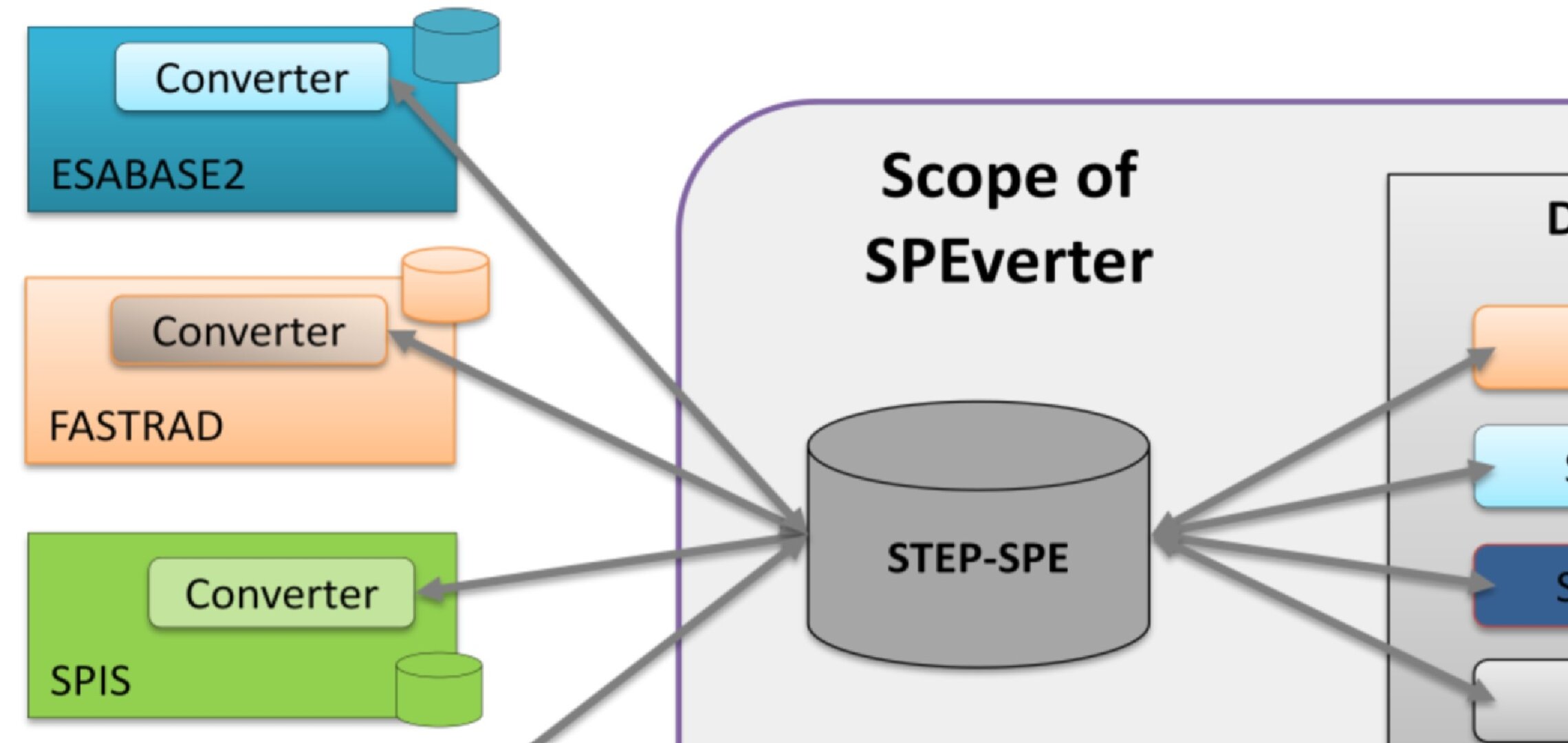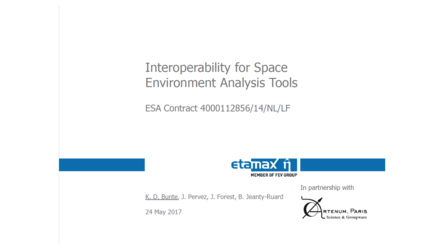Interoperability for Space Environment Analysis Tools
| Programme: | TRP Workplan | Achieved TRL: | 4 |
| Reference: | T708-311EE | Closure: | 2016 |
| Contractor(s): | ETAMAX(DE), ARTENUM (FR) | ||
In the early stages of a space project several analyses need to be carried out to establish project requirements and to refine project specification. The data needed for the analyses are manifold and tool-dependent. A few years ago the need for the definition of a project data exchange and storage protocol between Space Environment Analysis Tools was identified to improve the consistency of space environments related analysis, permitting projects data tracing and sharing. Following the thermal domain approach, a STEP-based solution was chosen and a first definition of the STEP-SPE protocol was carried out in a previous TRP study.
Objectives
- to evaluate the currently existing exchange capabilities between all Space Environment Analysis Tools
- to develop a new STEP-SPE converter interfacing the Spacecraft Plasma Interaction System (SPIS) with other tools
- to establish a roadmap for the future evolution of STEP-SPE
Achievements and status
- A new STEP-SPE converter interfacing the Spacecraft Plasma Interaction System v5.1 with other SEATS (ESABASE2, FASTRAD, GEANT4/GDML) was successfully developed and tested.
- Improvements of current converters in ESABASE2 and FASTRAD were performed.
- A complete analysis of the current data exchange capabilities based on the current STEP-SPE protocol implementationwas performed, which allowed to point out an intrinsic drawback due to tools dependent hierarchical implementation of the STEP-SPE protocol.
- While not yet operational the STEP-SPE protocol has now been implemented for all Space Environment Analysis Tools used in ESA and by a majority of European Industries.
Benefits
An important step was achieved in the understanding of the best way to implement a new Data Exchange and Storage Standard for Space Environment Analysis Tools. It also appeared that further steps couldbe undertaken to achieve a full interoperability in the space environment analysis domain, but also with other domains, in particular with the thermal analysis domain through the related STEP-TAS protocol.
Next steps
As a result a potential user and stakeholders workshop is foreseen (end 2017 or latest 2018) to consolidate the STEP-SPE development roadmap. A continuation trough GSTP is proposed in order to reach the target TRL by 2022.





